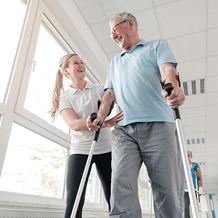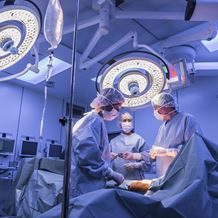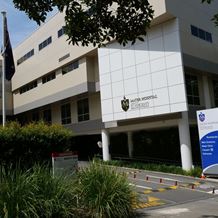Journey to 1500 - The Mako Robot
With Dr David Dickison
- Home
- Patient News
- Journey to 1500 - The Mako Robot
During October, our Head of Orthopaedic Surgery, Dr David Dickison, completed the Mater Private Hospital’s 1500th procedure using the Mako Robot. A milestone of extreme significance to us here at the Mater Hospital, Australia’s only member, and one of only 22 worldwide in the International Society of Orthopaedic Centers (ISOC).
We sat down with David to chat about the significance of the Mako Robot in orthopaedic surgery and his journey to completing over 700 Mako procedures.

So David, can you tell us a little about the Mako Robot?
David: To put it simply, the Mako Robot is an incredibly accurate cutting device used for hip and knee replacement procedures. It employs 3D CT-based surgical planning, haptic technology and data analytics to help minimise surgical error and assist your surgeon in producing a successful surgery. While it is modern technology, it was first released over a decade ago for half-knee replacements with the hip and full-knee replacement platforms coming in the years that have followed.
How long has it been used at the Mater?
David: From memory, the platform has been used at the Mater for approximately 5 years now. The Mater Hospital has always been at the forefront of technological advancements, and so it was one of the first hospitals in Sydney to operate using the Mako Robot.
Do you recall your first Mako Robot operation and the training you went through to achieve this?
David: My first Mako Robot patient was an elderly gentleman in his 80s who we performed a successful half-knee replacement for. Prior to being able to perform the surgery I completed some introductory training over in the USA with some of the pioneers in robotics, and I was blown away seeing live how accurate this robot could operate. Upon returning to Australia I was somewhat of a champion for the robot down here and insisted we needed to invest in this technology. We continued our training using cadavers which if I’m honest, was all common sense training so we got the hang of it pretty quickly. The initial platform was only capable of performing half-knee procedures and the new full-knee Mako platform arrived in Australia and the US around the same time. We applied a lot of the key learnings from our experience with the half-knee platform to learn how to comfortably operate the new full-knee one. As some of the early adopters worldwide, we were actually invited back to the US to help refine the teaching program. The journey had come full circle from trainee to expert!
What are the key benefits of the Mako Robot vs more conventional methods?
David: When I first began my career as a surgeon, we were using iron rods, jigs and cutting guides that we thought were quite revolutionary back in 1986 but really they were quite stone-age! They worked ok, but were only moderately accurate as they were at the mercy of movement and factors such as body fat, making the operations more difficult. With the introduction of the Mako Robot, the three main benefits we realised were precision, safety and the level of complexity that was now achievable.
In terms of precision and complexity, the robot works a bit like a car GPS in the sense that it has 3D mapping of the knee, so you can get a pretty good picture of what is inside without having to surgically open up the whole knee. We can also now create very complex surgical plans whereas we were perhaps more limited in the past. For example, the powerful mapping of the joint allows us to now adjust and place components to best fit the anatomy of each individual's joint, rather than trying to give everyone a more standardised procedure each time like had happened in the past.
The haptic (touch) technology functions of the robot are also of great benefit to patient safety. This technology allows the robot to know exactly where the edge of the blade is. With the surgical plans in place, the robot won't allow the surgeon to cut outside of what had been planned out, ensuring the surgery is no more invasive than it was intended to be. The robot not only tells the surgeon where they can and can't cut, but also provides updates during the surgery about how the components are sitting and whether they need to be adjusted to achieve the ideal outcome.
How can patients looking to have joint replacement surgery find out if they can have theirs done using the Mako Robot?
David: The first thing patients need to understand is that despite the vast majority being eligible for a Mako Robot procedure, not all are best suited to it. In a small percentage of cases, your doctor may assess a range of factors that affect you specifically and decide that you may be better suited to a more conventional surgical method. Revision surgical (second time) procedures are also often unsuitable. Patients simply need to discuss this with their surgeon.

If you’re considering a joint replacement surgery you can start your journey by browsing the Mater Hospital’s leading Orthopaedic surgeons by clicking here.
Remember, you will need a referral from your GP before you attend any specialist appointments.
Dr David Dickison
Dr Dickison has been an orthopaedic surgeon for over 25 years and has extensive experience with complicated knee problems. His particular area of interest is knee surgery and he has been involved in extensive research and development in this field.




